
BIM and IoT Integration: Smart Facilities for a Smarter Future
In an era characterized by the relentless pace of technological innovation, few industries have remained untouched by the transformative power of technology. Among the sectors embracing this change with open arms are the construction and facility management industries. Within this dynamic landscape, two distinct but complementary technologies have risen to prominence: Building Information Modeling (BIM) and the Internet of Things (IoT). These tools have emerged as formidable agents of change, poised to revolutionize the way we conceive, create, and oversee the facilities that shape our lives.
BIM, with its capacity to create intricate digital representations of structures and their components, has redefined the design and construction processes. Meanwhile, the IoT, with its interconnected network of sensors and devices, has introduced the concept of "smart" facilities that can sense, communicate, and respond to their environments in real-time. The convergence of these two technologies is where the true magic happens, opening a world of possibilities for creating smarter, more efficient, and sustainable buildings. In this article, we will explore the integration of BIM and IoT, and how it enables real-time facility monitoring, ushering in a new era of smart facilities for a smarter future.
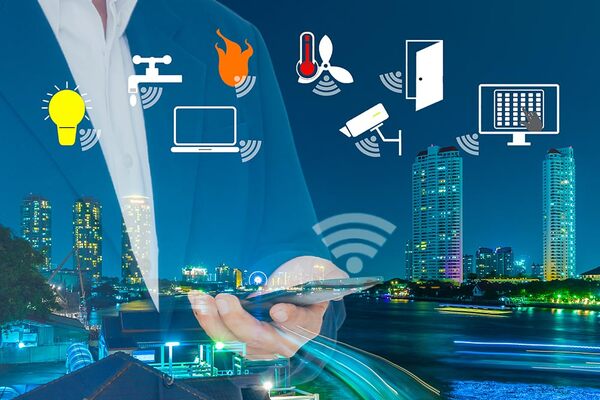
Exploring BIM and IoT
Before we delve into their amalgamation, let's take a moment to gain a fundamental understanding of what BIM and IoT encompass:
BIM (Building Information Modeling):
BIM stands as a digital representation of not just a building's physical attributes but also its functional characteristics. It transcends conventional 3D modeling by encompassing comprehensive data about every facet of a building's life cycle, spanning from the initial design and construction phases to its ongoing operation and maintenance. BIM serves as a catalyst for enhanced collaboration among architects, engineers, contractors, and facility managers, elevating the quality of decision-making while concurrently reducing errors throughout the entire lifecycle of a project.
IoT (Internet of Things):
IoT, on the other hand, pertains to an intricate network of interconnected physical devices and sensors, which communicate and exchange data through the vast expanse of the internet. These devices encompass a broad spectrum, ranging from sensors embedded within various building systems such as HVAC, lighting, and security, to the more portable and personal devices like wearables and smartphones. IoT's essence lies in its ability to enable real-time data acquisition, analysis, and control, thereby furnishing invaluable insights into the performance and condition of diverse assets within the built environment.
The Synergy Between BIM and IoT
The integration of BIM and IoT has ushered in a new era of smart facilities, where buildings are no longer static structures but dynamic entities capable of adapting to their environment and occupants in real time. Here's how these two technologies complement each other:
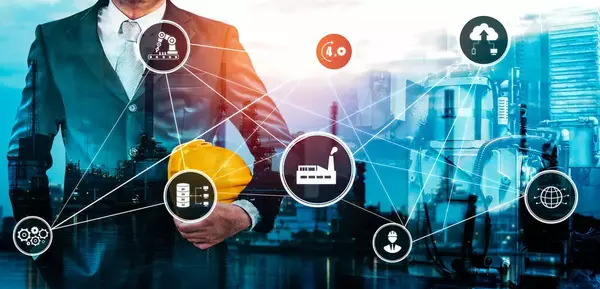
Real-Time Data Collection:
One of the most significant advantages of IoT in facility management is its ability to provide real-time data. IoT sensors placed strategically throughout a building can monitor various parameters such as temperature, humidity, air quality, and energy consumption. This data is then seamlessly integrated into the BIM model, creating a comprehensive and up-to-date representation of the facility.
For instance, in a smart office building, IoT sensors can continuously monitor the occupancy of meeting rooms. This data can be fed into the BIM model, allowing facility managers to optimize space utilization, schedule cleaning and maintenance tasks based on room usage, and even adjust heating and cooling systems to match occupancy patterns.
Predictive Maintenance:
By combining BIM and IoT, facility managers can implement predictive maintenance strategies. IoT sensors can monitor the performance of critical building systems such as HVAC, electrical, and plumbing. When these sensors detect anomalies or signs of impending failure, they can trigger alerts and maintenance requests within the BIM system.
This proactive approach to maintenance minimizes downtime, reduces repair costs, and extends the lifespan of building assets. Additionally, it enhances the safety of occupants by addressing potential hazards before they escalate.
Energy Efficiency:
The integration of BIM and IoT plays a pivotal role in optimizing energy usage within facilities. IoT sensors can monitor energy consumption in real-time, while BIM models provide insights into the building's energy efficiency potential.
With this data, facility managers can make informed decisions to reduce energy waste. For example, by analyzing historical energy usage patterns and weather data, they can adjust heating and cooling systems for better energy efficiency. Furthermore, BIM can be used to simulate and evaluate the impact of energy-efficient upgrades before implementation.
Enhanced Security:
IoT sensors generate a vast amount of data, which can be overwhelming without the right tools for analysis and visualization. BIM serves as the ideal platform for consolidating and visualizing this data in a meaningful way. Through dashboards and reports, facility managers can gain valuable insights into building performance, occupancy trends, and maintenance needs.
These insights enable more informed decision-making. Facility managers can allocate resources efficiently, prioritize maintenance tasks based on criticality, and plan for future upgrades and expansions with a clear understanding of the building's capacity and utilization.
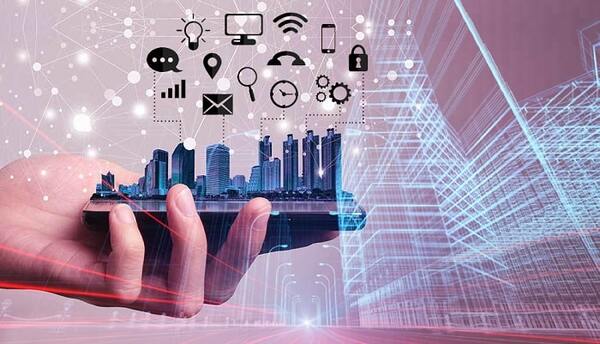
Space Utilization:
With IoT sensors tracking occupancy and movement within a building, facility managers can gain insights into space utilization. BIM can then help optimize space allocation and layout, ensuring that resources are used efficiently and that occupants have a comfortable and productive environment.
Improved User Experience:
The integration of BIM and IoT can enhance the user experience within a building. For example, smart lighting systems can adjust illumination levels based on occupancy, and smart HVAC systems can create personalized comfort profiles for occupants. This level of customization leads to improved satisfaction and productivity.
Lifecycle Management:
BIM's capabilities extend throughout a building's lifecycle, from initial design to demolition. IoT data complements this by providing continuous updates on a building's performance. This synergy ensures that the BIM model remains accurate and relevant over time, supporting better long-term decision-making.
Data Analytics and Visualization:
Both BIM and IoT generate vast amounts of data. Combining these datasets and employing advanced analytics tools allows facility managers to gain deeper insights into building performance, identify trends, and make data-driven decisions. Visualizing this data in intuitive dashboards further enhances understanding and communication.
Real-World Applications
The integration of BIM and IoT is already being applied in various real-world scenarios, showcasing the potential of this powerful synergy:
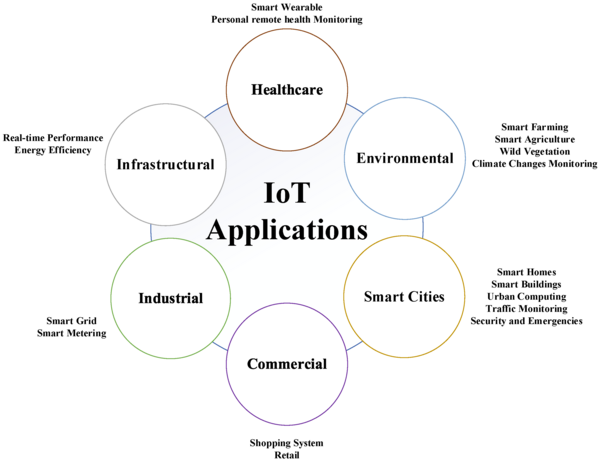
Healthcare Facilities:
Hospitals and healthcare institutions are using BIM and IoT integration to monitor patient vital signs, optimize room temperatures, and track the location of medical equipment. This not only improves patient care but also enhances operational efficiency.
Smart Offices:
Companies are adopting smart office solutions that integrate BIM and IoT to create flexible workspaces, monitor environmental conditions, and personalize lighting and HVAC settings for employees. This leads to more comfortable and productive work environments.
Smart Cities:
Entire city infrastructures can benefit from the integration of BIM and IoT. Smart city projects leverage these technologies to manage traffic flow, reduce energy consumption, monitor air quality, and enhance public safety.
Sustainable Buildings:
Sustainability is a top priority in construction and facility management. BIM and IoT integration enables the continuous monitoring of energy usage and environmental impact, supporting the development of green and sustainable buildings.
Challenges and Considerations
While the integration of BIM and IoT offers numerous advantages, it also presents challenges that must be addressed:
Data Security and Privacy:
Collecting and storing real-time data from IoT devices requires robust cybersecurity measures to protect sensitive information. Additionally, privacy concerns must be addressed to ensure compliance with regulations and user trust.
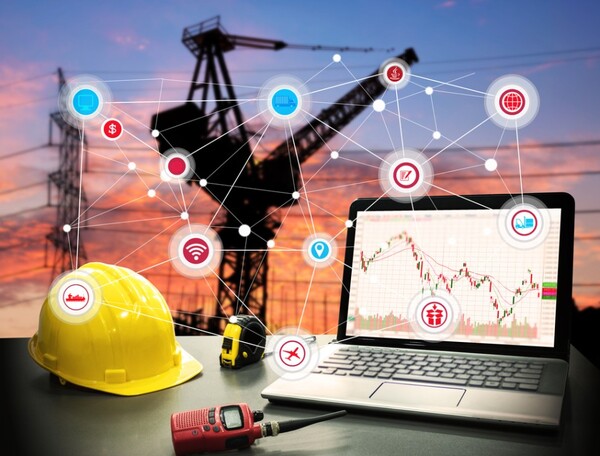
Interoperability:
IoT devices come from various manufacturers and may use different communication protocols. Ensuring interoperability and seamless integration with BIM can be complex and require standardized approaches.
Skill and Knowledge Gap:
Implementing BIM and IoT integration requires a skilled workforce with expertise in both technologies. Organizations need to invest in training and development to harness the full potential of these tools.
Cost Considerations:
The upfront costs of implementing BIM and IoT integration can be substantial. However, organizations must weigh these costs against the long-term benefits, including reduced operational expenses and improved sustainability.
The Road Ahead: Embracing the Future of Construction
In conclusion, the fusion of Building Information Modeling (BIM) and the Internet of Things (IoT) marks a transformative turning point in the realm of construction and facility management. This synergy is not merely a fleeting technological trend; it represents a profound shift in how we conceive, construct, and manage our built environment.
The advantages of this integration are extensive and impactful, ranging from real-time data collection to predictive maintenance, energy efficiency, enhanced security, and improved user experiences. BIM and IoT empower us to make informed decisions, anticipate issues, and optimize resource utilization in ways that were previously unimaginable.
These technologies find applications across diverse sectors, from healthcare to smart offices, and smart cities to sustainable buildings, elevating efficiency, sustainability, and user satisfaction. However, it's crucial to address challenges such as data security, interoperability, and the need for a skilled workforce to harness their full potential.
As we continue to refine and expand upon the integration of BIM and IoT, we move closer to a future where our buildings are not just inanimate structures but living, adaptable partners in our daily lives. Embracing this integration is not merely an option; it's a commitment to a future where our facilities work seamlessly with our aspirations, making the world a smarter, more sustainable, and more comfortable place to inhabit. In the convergence of BIM and IoT, we find the blueprint for a better tomorrow, where our built environment becomes a dynamic force for positive change.
Check https://app.bidlight.com for how BidLight can help you estimate your BIM model!